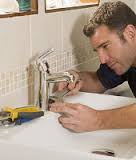Types of Medical Malpractice Suits
Types of Medical Malpractice Suits
As is commonly known, a large number of medical malpractice lawsuits are filed each year. Common types of medical malpractice exist and each of these is listed below.
Prescription Drug Errors: Prescription drug errors are one of the most common forms of medical malpractice. When a prescription drug error causes harm to a patient, a medical malpractice claim can be filed. A number of people can be liable in these types of cases. They include: 
Doctors who prescribe medication
Healthcare or nursing staff who administer drugs
Pharmacists who fill prescriptions
Prescription drug companies, manufacturers, and marketers
These individuals and entities can be held liable for a number of mistakes or missteps, including:
Prescribing or administering the wrong medication.
Prescribing or administering the wrong dosage.
Failure to reasonably foresee detrimental complications, such as harmful drug interaction.
Manufacturing and marketing defective or unreasonably unsafe medications.
Writing illegible prescriptions that lead to patient harm.
Birth Defects Medical Malpractice: Any type of medical treatment provided by a healthcare professional before or during the birth process can lead to a medical malpractice claim if the care does not meet the accepted medical standards which results in harm to the baby and or the mother. However, it should be noted that harm to the baby or the mother does not automatically mean that medical malpractice has happened. The question of whether the doctor and other healthcare providers acted in a manner that was consistent with a reasonable level of care should be asked in order to determine if malpractice has occurred.

Some of the more common types of birth injury include:
Cerebral Palsy
Erb’s Palsy
Brachial Plexus
Erb-Duchenne
Dejerine-Klumpke Palsy
Fractures
Brain damage
Fetal death
Many other factors may cause injuries to the babies and their mothers during childbirth.
Forceps or vacuum used incorrectly
Doctor failure to prepare for danger in a higher-risk pregnancy
Prescribed medication put the mother or baby at unreasonable risk of harm
Inadequate monitoring of the baby’s condition
The doctor did not plan for a C-section when it was medically necessary to avoid harm
Surgical and Diagnostic Errors: Misdiagnosis, late diagnosis, or failure to diagnose are examples of diagnosis errors that can result in medical malpractice claims. Regarding surgical errors, medical malpractice can arise when a doctor, during surgery, inadvertently causes damage to an internal organ, blood vessel, or other body parts that results in severe injury or problems. There are times when these types of mistakes will not appear until weeks or months after the surgery.
Read More »
 Save Yourself Some Headaches With These Tips On Auto Insurance
Save Yourself Some Headaches With These Tips On Auto Insurance
